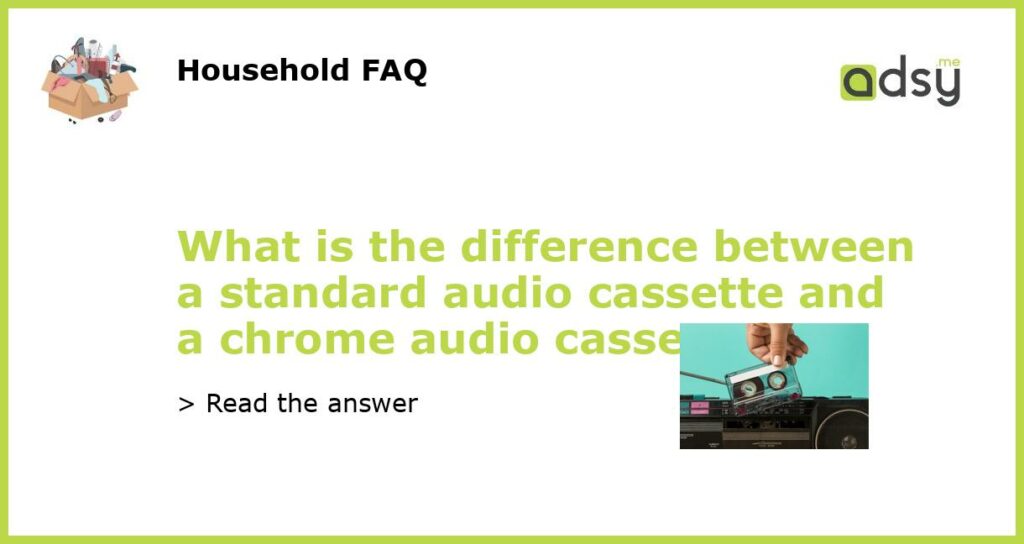The difference between a standard audio cassette and a chrome audio cassette
Audio cassettes were the primary means of audio recording and playback from the mid-1960s until the early 2000s. In the 1980s, cassette manufacturers introduced a new type of audio cassette known as the “chrome cassette.” While both standard and chrome audio cassettes look similar, there are significant differences between them.
What is a standard audio cassette?
A standard audio cassette is made of plastic with a magnetic tape inside. The tape is coated with small iron oxide particles that can be magnetized by the recording head of a cassette recorder. The audio signal is converted into an electrical signal, which is then stored in the magnetic particles on the tape. Standard audio cassettes were prone to tape hiss, noise, and low-frequency drop-offs.
What is a chrome audio cassette?
A chrome audio cassette is a higher quality cassette that uses a different type of tape coating called chromium dioxide. This coating is smoother and more uniform than the iron oxide used in standard cassettes. The result is a cassette that produces higher quality sound with less tape hiss, noise, and low-frequency washout.
What are the benefits of using a chrome audio cassette?
Chrome audio cassettes not only produce better sound quality, but they also last longer than standard audio cassettes. The chromium dioxide coating is more resistant to wear and tear, making the tapes more durable. Chrome cassettes were also more expensive than standard cassettes, making them a popular choice among serious audiophiles and music producers who demanded the highest possible audio quality.
While the standard audio cassette and the chrome audio cassette may look similar, the differences in their tape coatings make a significant difference in sound quality and longevity. While standard cassettes were adequate for everyday use, chrome cassettes were favored by audiophiles and music producers for their superior audio quality and durability.


![The Number of the Beast (40th Anniversary) [CASSETTE]](https://m.media-amazon.com/images/I/515EXAs-OCL.jpg)
![Guardians Of The Galaxy: Awesome Mix Vol. 1 [CASSETTE]](https://m.media-amazon.com/images/I/51D2YTc-jmL.jpg)
![Abba Gold (Mc) [CASSETTE]](https://m.media-amazon.com/images/I/31Yk6b8kW-L.jpg)
